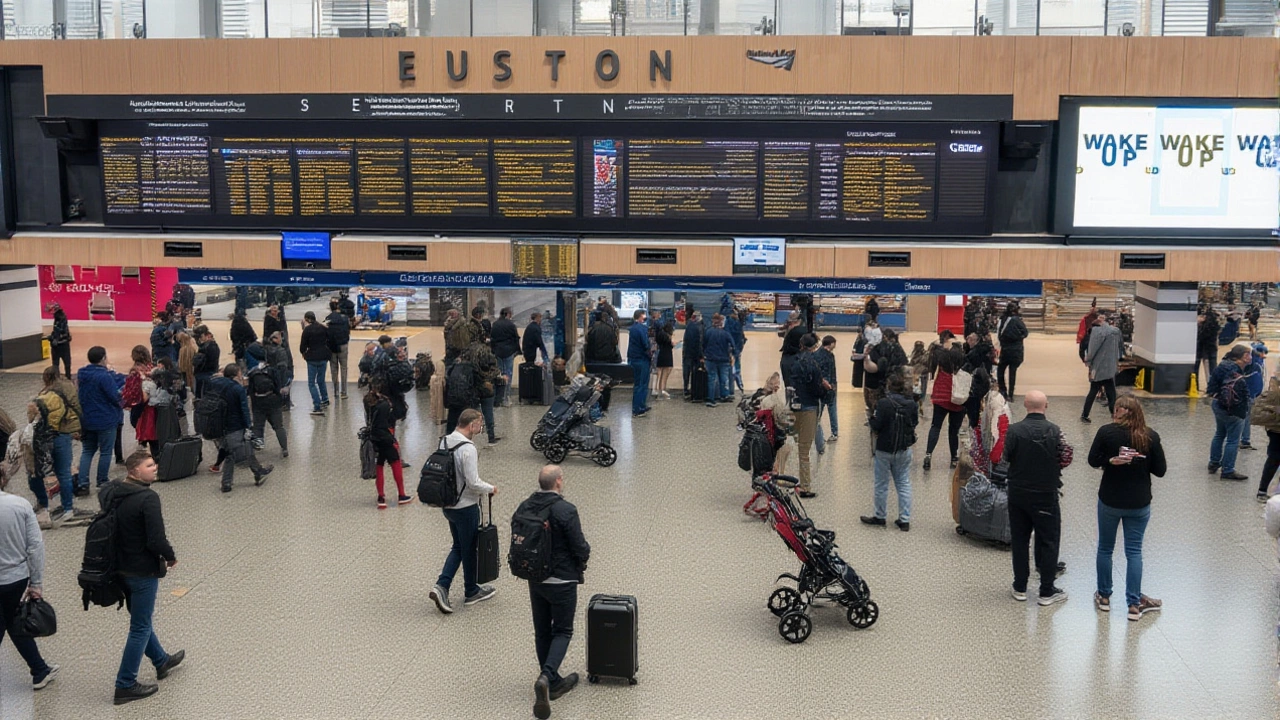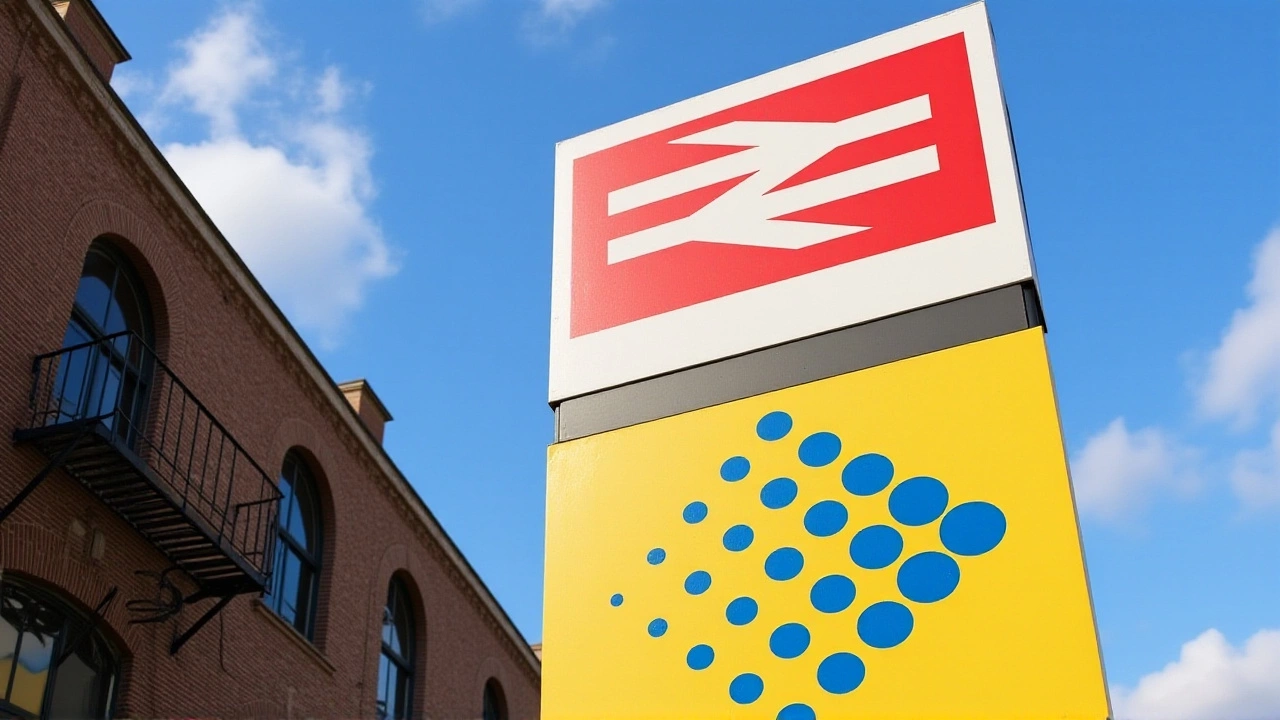Controlled explosion at London Euston station after suspect package sparks evacuation
 Nov, 22 2025
Nov, 22 2025
At around 9:30 a.m. on Saturday, November 22, 2025, the quiet hum of London’s morning rush hour was shattered when Metropolitan Police Service officers began evacuating Euston railway station — one of the UK’s busiest transport hubs — after reports surfaced of a suspicious package near its entrance on Euston Road. Within minutes, the station, which handles roughly 50 million passengers annually, fell silent. Trains stopped. Platforms emptied. And by 10:15 a.m., the entire area was sealed off under a tight police cordon. The twist? No alarm had been triggered. No warning call made. It was an anonymous tip on social media that set everything in motion.
What Happened at Euston?
The Metropolitan Police Service, operating out of New Scotland Yard, received a flurry of posts on X (formerly Twitter) describing an unattended bag near the station’s main entrance. No one claimed responsibility. No video surfaced. Just a vague description: “Looks odd. Left alone.” Within 20 minutes, specialist units from the Counter Terrorism Command arrived, alongside British Transport Police, who patrol the UK’s rail network from their HQ just 200 yards from the station.By 10:45 a.m., the decision was made: the package couldn’t be safely assessed remotely. A controlled explosion was the only option. At 11:07 a.m., a low, muffled boom echoed across Camden, followed by a cloud of dust that settled quickly. No screams. No panic. Just the quiet efficiency of trained professionals. The bomb squad had done their job — and done it well.
Why This Matters Beyond the Station
Euston isn’t just a train station. It’s a lifeline. Avanti West Coast, London Midland, and Southeastern trains all converge here, connecting London to Birmingham, Manchester, Glasgow, and beyond. On any given Saturday, over 150,000 people pass through its gates. When services halted, thousands were stranded. Commuters missed appointments. Families missed connections. Tourists wandered confused, luggage in tow. The ripple effect hit taxi ranks, bus stops, and even nearby cafes that rely on foot traffic from travelers.What’s more, this wasn’t the first time this year. On October 2, 2025, a similar alert at Euston led to a 90-minute evacuation. Back then, it turned out to be a forgotten backpack. This time? Officials wouldn’t say. The package’s contents remain undisclosed — no photos, no description, no clues. But the fact that authorities chose a controlled explosion tells you everything: they didn’t take any chances.

Who’s in Charge — and How They Decide
The Metropolitan Police Service, under Commissioner Sir Mark Rowley, oversees more than 43,000 officers. Their Explosive Ordnance Disposal (EOD) unit is among the most experienced in Europe. They train relentlessly for scenarios like this: public spaces, high footfall, no clear threat profile.According to their public guidelines, the protocol is simple: if a suspicious item can’t be visually confirmed as harmless — and if it’s in a location where evacuation is possible — they remove people, isolate the object, and detonate it safely. No debate. No delay. “It’s not about fear,” said one officer, speaking anonymously. “It’s about certainty. We’d rather disrupt a hundred trains than risk one life.”
And that’s exactly what happened. The cordons were lifted at 11:23 a.m., just 16 minutes after the explosion. By 11:40 a.m., the first train — a West Coast service to Birmingham — pulled into Platform 1. No delays. No further checks. Just normal service resumed.
The Bigger Picture: Security in an Age of Uncertainty
This incident comes amid a broader uptick in suspicious-package alerts across UK transport hubs. In October alone, there were seven similar incidents at stations like King’s Cross, Liverpool Street, and Manchester Piccadilly. None resulted in injuries. All were resolved with controlled explosions or confirmed as hoaxes.But here’s the uncomfortable truth: the system works because we accept the inconvenience. We don’t complain when trains are delayed. We don’t demand answers when details are withheld. We trust the process — because we’ve seen what happens when we don’t.
The public didn’t see the device. Didn’t hear the warning. Didn’t feel the fear. But they felt the silence. And that’s enough.

What’s Next?
The Metropolitan Police Service has confirmed no arrests were made. No group has claimed responsibility. Investigators are reviewing CCTV from the surrounding streets, but with no clear suspect or motive, the case may remain closed as a precautionary measure — not a criminal one.Still, the message is clear: security at major transport nodes is now a daily reality. Cameras, sensors, and rapid-response teams are permanent fixtures. What’s changing is our tolerance for uncertainty. We’re learning to live with the pause — the quiet moment before the explosion — because we know, deep down, that it’s better than the alternative.
Frequently Asked Questions
Why was a controlled explosion used instead of a robot or other method?
Controlled explosions are used when the nature of the object cannot be safely determined remotely. While robots can carry out initial assessments, if there’s any doubt about the device’s trigger mechanism or explosive material, detonating it in a controlled environment is the safest option. This minimizes risk to the public and officers, especially in high-traffic areas like Euston.
How often do these types of incidents happen in London?
On average, the Metropolitan Police respond to 15–20 suspicious-item reports each month across London’s transport network. About 30% result in controlled explosions; the rest are confirmed as harmless items like forgotten bags or mistaken alarms. Euston has seen two such incidents in 2025 alone — October 2 and November 22 — both resolved without injury.
Were any injuries or casualties reported?
No. The Metropolitan Police confirmed zero injuries, no property damage beyond minor debris near the explosion site, and no panic-related incidents. The evacuation was orderly, and emergency medical teams stood by as a precaution — but none were needed. This reflects the effectiveness of their training and communication protocols.
Why wasn’t the public told what the package looked like?
Authorities withhold physical descriptions to avoid copycat reports or public speculation that could trigger unnecessary panic. In past cases, releasing details led to dozens of false alarms. By keeping specifics private, they reduce noise in the system and focus resources on real threats — not rumors.
Did the British Transport Police play a role?
Yes. While the Metropolitan Police led the operation, British Transport Police — responsible for rail security nationwide — provided critical support. Their officers helped secure station entrances, manage passenger flow, and coordinate with train operators to suspend services safely. Their proximity to Euston (just 200 yards away) allowed for rapid joint response.
Will this affect future travel plans to London?
Not significantly. Transport disruptions like this are rare and usually short-lived. London’s rail network is designed with security in mind — from surveillance to rapid-response teams. While delays may occur during alerts, they’re typically resolved within an hour. Travelers should expect occasional checks, but not long-term changes to schedules or safety procedures.